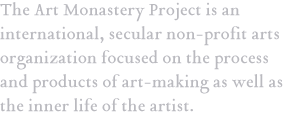Emerson on Art, part 5
I remember, when in my younger days I had heard of the wonders of Italian painting, I fancied the great pictures would be great strangers; some surprising combination of color and form; a foreign wonder, barbaric pearl and gold, like the spontoons and standards of the militia, which play such pranks in the eyes and imaginations of school-boys. I was to see and acquire I knew not what. When I came at last to Rome, and saw with eyes the pictures, I found that genius left to novices the gay and fantastic and ostentatious, and itself pierced directly to the simple and true; that it was familiar and sincere; that it was the old, eternal fact I had met already in so many forms,–unto which I lived; that it was the plain you and me I knew so well,–had left at home in so many conversations. I had the same experience already in a church at Naples. There I saw that nothing was changed with me but the place, and said to myself,–‘Thou foolish child, hast thou come out hither, over four thousand miles of salt water, to find that which was perfect to thee there at home?’–that fact I saw again in the Academmia at Naples, in the chambers of sculpture, and yet again when I came to Rome, and to the paintings of Raphael, Angelo, Sacchi, Titian, and Leonardo da Vinci. “What, old mole! workest thou in the earth so fast?” It had travelled by my side: that which I fancied I had left in Boston was here in the Vatican, and again at Milan, and at Paris, and made all travelling ridiculous as a treadmill. I now require this of all pictures, that they domesticate me, not that they dazzle me. Pictures must not be too picturesque. Nothing astonishes men so much as common-sense and plain dealing. All great actions have been simple, and all great pictures are.
The Transfiguration, by Raphael, is an eminent example of this peculiar merit. A calm, benignant beauty shines over all this picture, and goes directly to the heart. It seems almost to call you by name. The sweet and sublime face of Jesus is beyond praise, yet how it disappoints all florid expectations! This familiar, simple, home-speaking countenance is as if one should meet a friend. The knowledge of picture-dealers has its value, but listen not to their criticism when your heart is touched by genius. It was not painted for them, it was painted for you; for such as had eyes capable of being touched by simplicity and lofty emotions.
From here.
[Part of the Daily Lectio series, named after the Benedictine tradition of lectio divina, “divine reading.” For instructions and background on the series, click here. Subscribe to the Daily LectioRSS feed. Send comments or suggested readings to nathan@artmonastery.org]Leave a Reply
You must be logged in to post a comment.




